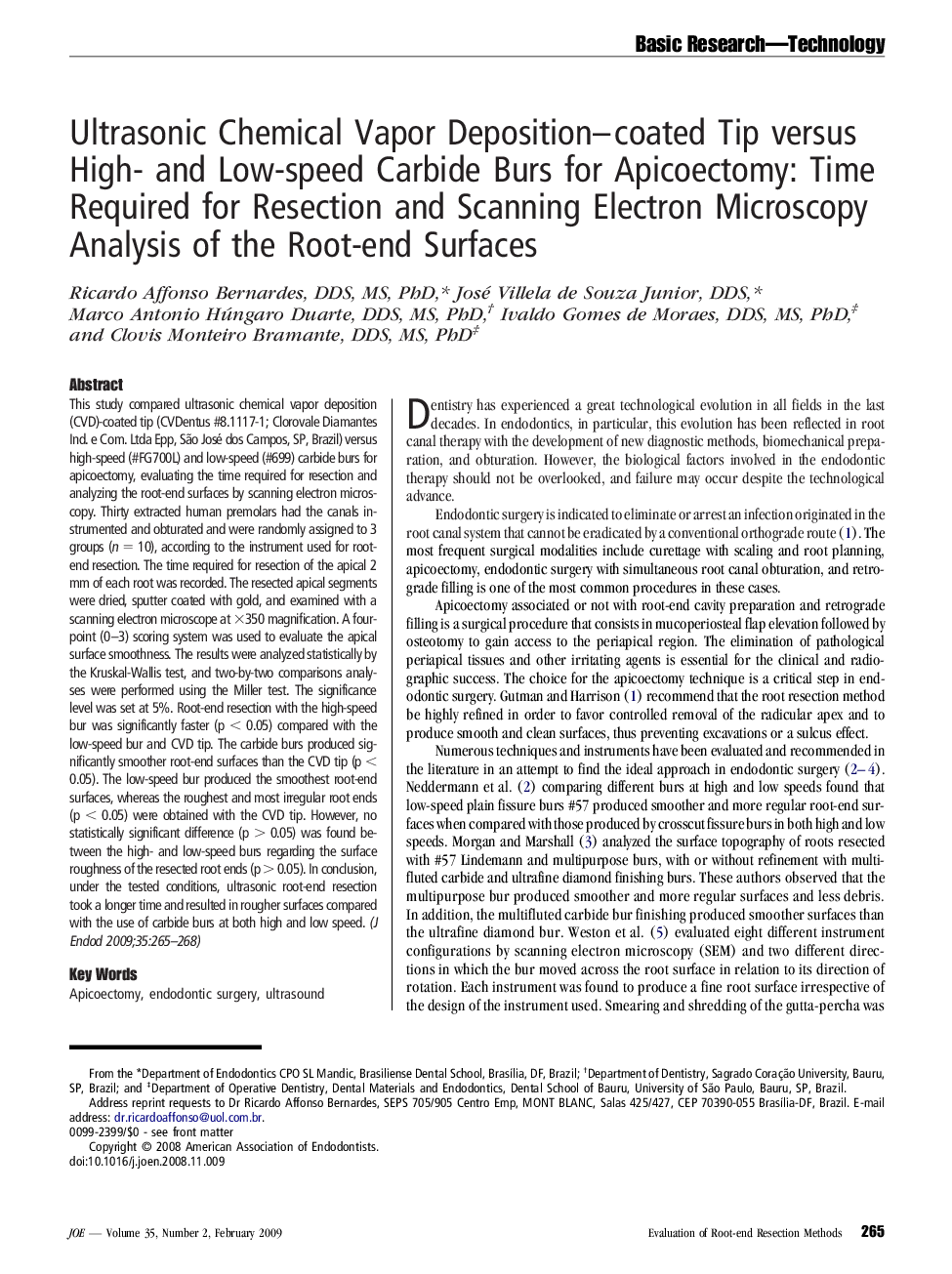| Article ID | Journal | Published Year | Pages | File Type |
|---|---|---|---|---|
| 3149645 | Journal of Endodontics | 2009 | 4 Pages |
This study compared ultrasonic chemical vapor deposition (CVD)-coated tip (CVDentus #8.1117-1; Clorovale Diamantes Ind. e Com. Ltda Epp, São José dos Campos, SP, Brazil) versus high-speed (#FG700L) and low-speed (#699) carbide burs for apicoectomy, evaluating the time required for resection and analyzing the root-end surfaces by scanning electron microscopy. Thirty extracted human premolars had the canals instrumented and obturated and were randomly assigned to 3 groups (n = 10), according to the instrument used for root-end resection. The time required for resection of the apical 2 mm of each root was recorded. The resected apical segments were dried, sputter coated with gold, and examined with a scanning electron microscope at ×350 magnification. A four-point (0–3) scoring system was used to evaluate the apical surface smoothness. The results were analyzed statistically by the Kruskal-Wallis test, and two-by-two comparisons analyses were performed using the Miller test. The significance level was set at 5%. Root-end resection with the high-speed bur was significantly faster (p < 0.05) compared with the low-speed bur and CVD tip. The carbide burs produced significantly smoother root-end surfaces than the CVD tip (p < 0.05). The low-speed bur produced the smoothest root-end surfaces, whereas the roughest and most irregular root ends (p < 0.05) were obtained with the CVD tip. However, no statistically significant difference (p > 0.05) was found between the high- and low-speed burs regarding the surface roughness of the resected root ends (p > 0.05). In conclusion, under the tested conditions, ultrasonic root-end resection took a longer time and resulted in rougher surfaces compared with the use of carbide burs at both high and low speed.
